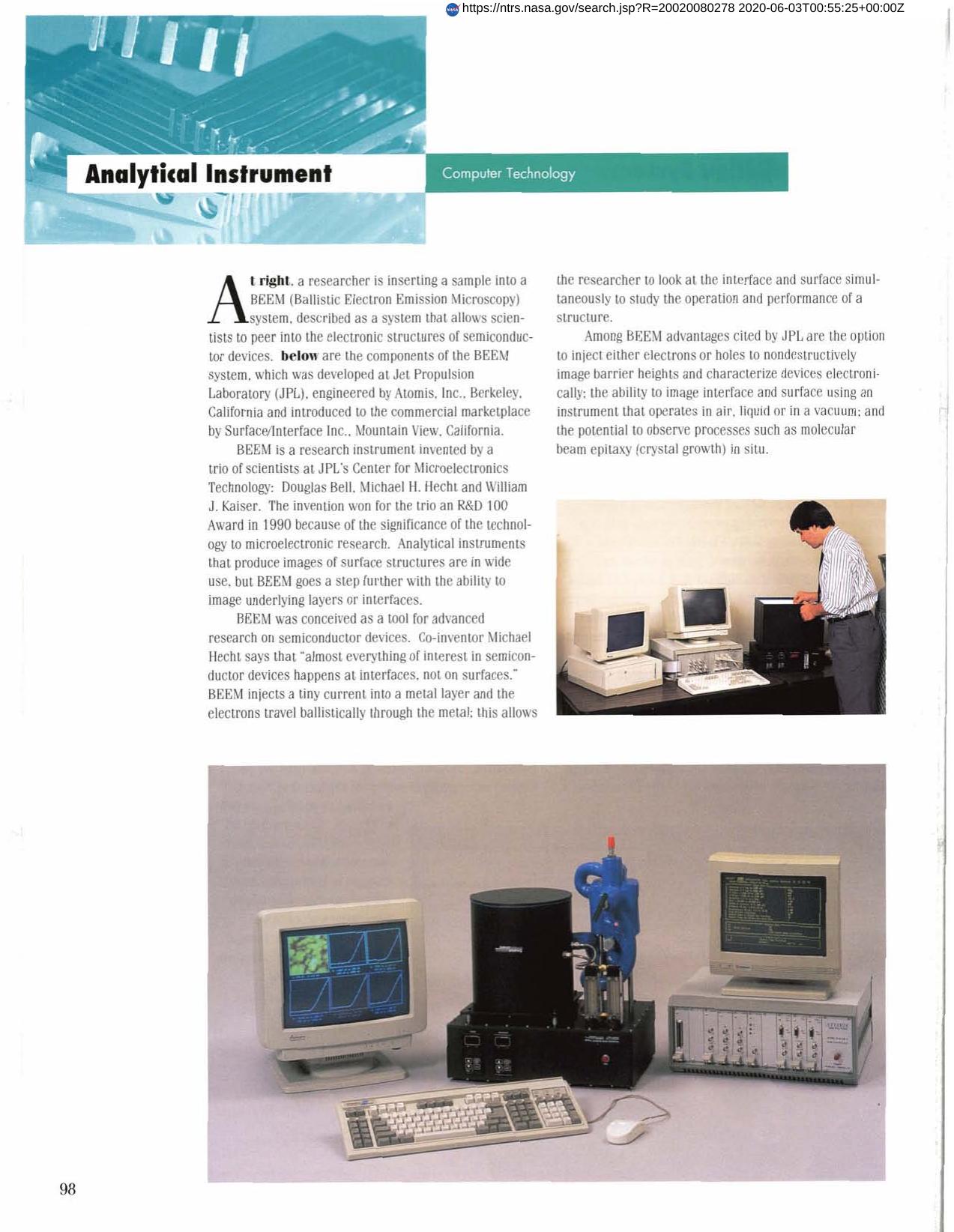
Analytical Instrument
BEEM (Ballistic Electron Emission Microscopy) was invented at Jet Propulsion Laboratory's Center for Microelectronics Technology. It is a significant research instrument for microelectronics research because it is able to image underlying layers or interfaces of surface structures. A tiny current is injected into a metal layer and the electrons travel ballistically through the metal allowing the researcher to study the operation and performance of a structure. Other advantages include nondestructive imaging of barrier heights and electronic characterization of devices, as well as the potential to observe processes like molecular beam epitaxy (crystal growth) in situ.
Full article: http://hdl.handle.net/hdl:2060/20020080278

Analytical Instrument

Analytical Instrument













